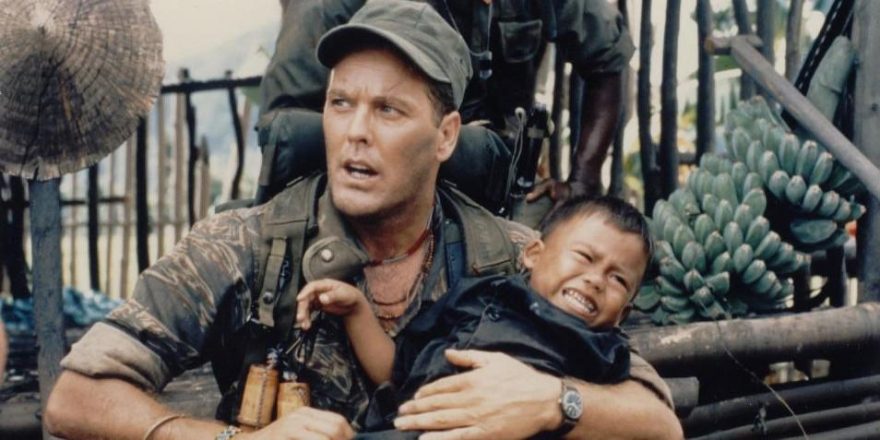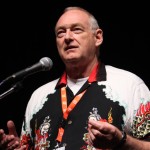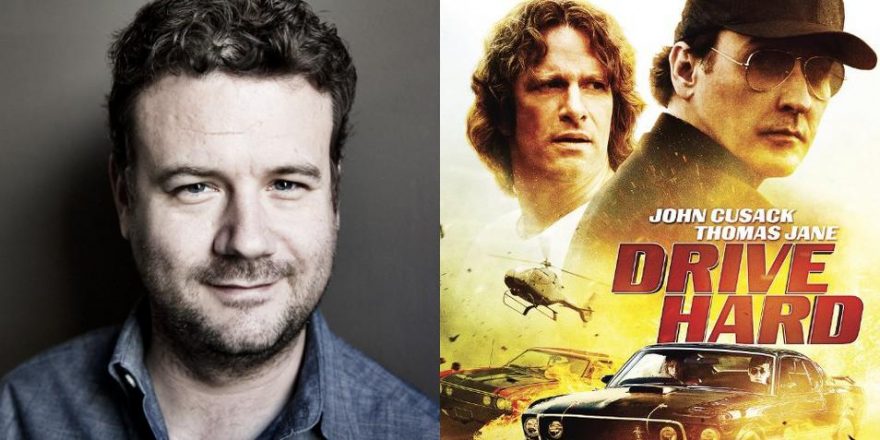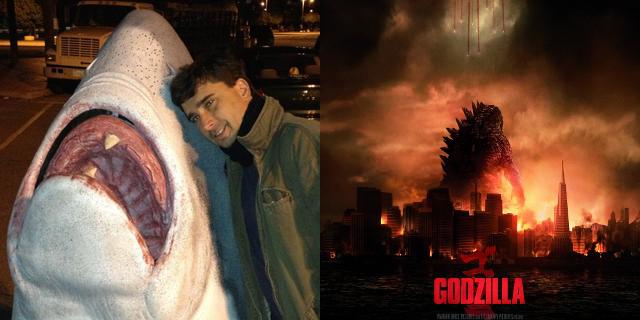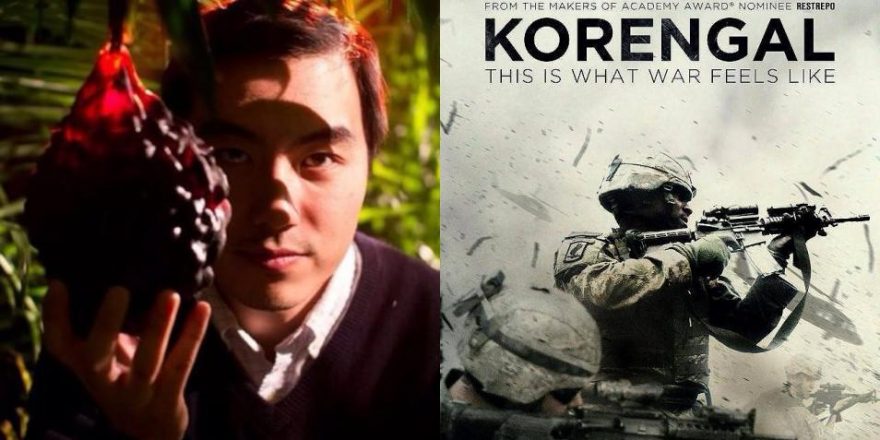
“In order to save the village, we had to destroy the village…”
Filmmakers are passionate, obsessive folk, often oblivious to the perils of shooting in foreign parts. We are driven by the belief that each project is the Holy Grail. “Let nothing stand in your way” is the mantra.
In 1988, I was being taken to survey a location two hours’ drive out of Manila for my Vietnam war movie The Siege of Firebase Gloria, accompanied by First A.D. Carding Guzman and production designer Toto Castillo. We passed a guard tower at a crossroads, its elevated platform cocooned in netting, conjuring the image of a robot bee-keeper.
“What’s the net for?” I asked.
“Grenades, sir,” was the deadpan reply from our driver.
Yes, of course. In 1988, the Philippines was still in the grip of two insurgencies, an Islamic one in the south, and the communist New People’s Army (NPA) on the main island of Luzon, where we were. So an hour’s drive out of Manila, we were already crossing the perceived border beyond which lay NPA-contested territory, and we had an hour’s driving to go.
“Don’t worry about the NPA, sir, they are the good people.”
I mistook this for character evaluation. In fact, it was an item in all Filipino movie budgets at the time: the NPA were security staff for locations outside Manila. Indeed, who better to protect you from the NPA than the NPA themselves? I was told that they were better than the Philippine military. They did not get drunk, or bring their cousins demanding they get paid as well.
Inspired by Zulu and The Alamo, I planned to make an even-handed battle movie, a veteran’s perspective of the Tet Offensive. There would be a vein of black comedy embodied in the Sgt. Major Bill Hafner character, played by R. Lee Ermey, an actor who drew from his own life in the Marine Corps and two tours in Vietnam. Both R. Lee and Wings Hauser (as Cpl. Joseph L. “Nard” DiNardo) did a terrific job conveying the madness of war.
About two hours out of Manila, we arrived on a hill with a good view of the surrounding countryside, an ideal choice for the firebase. While awaiting the arrival of the NPA representatives, we discussed the layout of the defensive perimeter and bunkers. A pick-up truck approached and parked. Two armed men with bandanas covering their faces got out. Apart from a moment of frisson at the sight of a real loaded gun (I was unaware at that point that two of my three Filipino companions were also armed), I did not feel I had anything to fear. It had a routine vibe. And indeed, cordial conversation in Tagalog took place, a deal was made, and the NPA were on their way again. We would pay $5000 for each month of our stay in their territory. They would protect us, ensure that local bandits did not strip our firebase set each night, etc. They even volunteered to be in our battle scenes, and bring their own rifles. But they had Armalites (AR-15s), and we needed AK 47s, which were in abundance in Manila. (The well-trained Viet Cong women you see in some battle scenes are NPA.)
Their only stipulation was this: when we brought in the Filipino Army helicopter gunships for the strafing and bombing scenes, we would give the NPA notice so they could make themselves scarce. The army were grateful for this too. They did not want an unnecessary fight either. This sentiment was indicative of a level of popular support for the NPA, purported champions of the poor in the Philippines, where social inequality in the recently ended Marcos era had reached obscene levels. During production, my wife took our seven- and four-year-old boys to a birthday party at an elite Montessori school. An actor in a Skeletor costume played ogre to the kids while security with sub-machine guns patrolled the perimeter to prevent kidnapping. Just a normal day….
Cash flow was erratic throughout the shoot. The lab processed our negative but would not make a work print for our inspection without payment. I shot the last three weeks of the film blind. My stuntmen went on strike for weeks of backpay on a Saturday afternoon in the middle of a battle scene. A producer drove to a nearby racetrack and borrowed money from his friends.
One day I was down to 700 feet of Kodak to shoot another battle scene. No sign of replenishment. Andrew V. McLaglen (who directed many great movies and countless TV episodes) happened to be shooting Return to the River Kwai, his last film, in a nearby paddy field. He sent me 3000 feet of Fuji as a gift. Vale: Andrew V. McLaglen (1920 – 2014), a class act.
When the main unit moved on to Metro Manilla, the company was late in paying the NPA for the next month. Second unit director Andrew Prowse was warned by his Filipino crew to stay in his hotel in Pagsanhan, or he would be taken as a surety. Within a couple of days, the $5K was delivered and the second unit continued getting great stuff.
During a tough night shoot, I wandered away from the lights of the set so I could gaze at the brilliant stars in the sky and recover some inspiration. One of the NPA security people at our perimeter told me not to go any further.
“But you’re the Good People,” I said.
“There are good Good People, and there are bad Good People, particularly at night,” he replied in good English. “Best stay back.”
OK. Got it.
But I do not think that I really “got it” until the night we were relaxing having dinner in the only American-style bar in the tiny town of Pagsanhan (where a lot of Apocalypse Now was shot). Located in the only street-lit section, this bar was right next door to the police station. Twenty yards’ walk from door to door. The police chief entered the bar. He wore a sidearm, a sub-machine gun hung from a strap around his neck, and ammunition pouches and grenades dangled from his belt. All this firepower to go 20 yards. Grenades! Was everywhere outside of the walls of the police station a free-fire zone? Later outside the bar, two of his men monstered one of our cast, Clyde Jones, who played Shortwave.
“What are you doing in the Philippines?” they demanded.
“I’m making a movie!” tried Clyde, with the biggest shit-eating grin he could muster.
“What do you do?” Clyde felt confident in his reply.
“I’m an actor.”
One cop snorted and turned to the other officer. “An actor? Shoot him!”
For a few heart-pounding seconds, Clyde really thought they meant it. I mean, two liquored-up cops, thousands of miles from the U.S., in a town with three street lamps…who would ever know what really happened to him? At that moment, life in Detroit was looking pretty good to Clyde. Then they roared with laughter, and let him go.
Clyde Jones, being the ballsy guy he is, did not catch the next plane home, but continued giving a great performance and dodging pyrotechnics till we were done. (Incidentally, our chief pyro guy Danny “ Boom Boom” Dominguez, as he was known locally, told me that we ultimately let off more explosions than Hamburger Hill!) When the army helicopters were scheduled for the strafing and bombing sequences, we duly informed the NPA, who melted back into the jungle. But the helicopters were five hours late. The captain in charge apologized. They had been on a mission against the NPA 100 miles north.
“We will now change to blank ammunition.” he said. “Excellent idea!” I quipped. The army guys laughed. But my joke masked a sharp twinge of guilt and sorrow. We were filming a simulated war, while further north people were dying in real war, compatriots perhaps of the local NPA who overall had treated us well. This strengthened my resolve to maintain the underlying theme of the movie, that wars are fought by brave, dutiful people on both sides. I faced considerable resistance on this issue from the distributor, who felt this point of view was “unpatriotic,” and cut the opening and closing bookends — the film you see was shot as a flashback — that depicted reconciliation 15 years later. Gone. The bookends were cut during the ADR session, so I introduced a sparse narration from R. Lee Ermey to compensate. Enough evenhandedness remains in the picture, which has become a favorite of a lot of Vietnam vets.
Back in Manila one night, I staged the 1968 attack on the U.S Embassy in Saigon, at a run-down Foreign Businessmen’s Club, a passable match for the actual building, in fact. After Take 1 of the initial assault, with Viet Cong shooting up the sentry box and driving in hurling grenades, we suddenly found ourselves surrounded by police and army units. It turned out that President Cori Aquino and General Ramos were meeting in a hotel a couple of blocks away. Their immediate thought, upon hearing the explosions and gunfire, was that another revolution had broken out. We were shut down for two hours, while I persuaded the authorities that I had no plans to overthrow the government of the Philippines…
Too many stories to tell.


